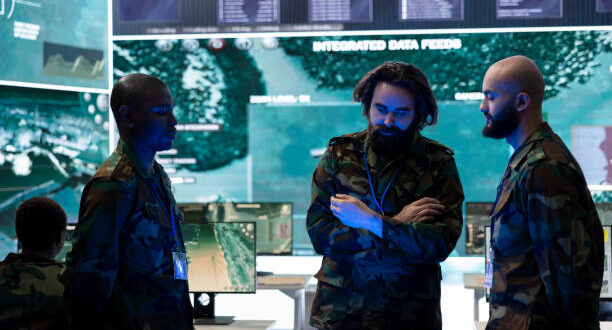In today’s rapidly evolving battlefield, the role of Special Operations Forces (SOF) is transforming at a staggering pace. These elite units, long revered for their agility, precision, and ability to execute complex missions in hostile environments, are now integrating cutting-edge technology to maintain a strategic edge. The combination of advanced technology and traditional SOF capabilities has created a paradigm shift in the way global powers approach special operations. As the world becomes more interconnected and threats evolve, the future of Special Operations Forces will depend on their ability to adapt and leverage the latest innovations in warfare.
Evolution of Special Operations Forces
Special Operations Forces have always played a crucial role in military strategies worldwide. Historically, their focus has been on missions such as counterterrorism, unconventional warfare, hostage rescue, and direct action. However, the modern battlefield is changing. Cyber warfare, artificial intelligence (AI), unmanned systems, and advanced surveillance are all becoming essential elements of military operations. As these technologies continue to progress, SOF units must be equipped not only with physical prowess but also with technological expertise.
To thrive in this new era, special operators are being trained in a range of high-tech skills, from cyber operations to data analysis. This shift represents a significant departure from traditional SOF training, which emphasized physical endurance and tactical precision. While these skills remain critical, the future of special operations will depend on the integration of both physical and digital competencies to tackle emerging challenges.
Technology
The rise of artificial intelligence and machine learning has changed how military forces operate, and Special Operations Forces are no exception. AI can now assist SOF units by analyzing vast amounts of data, identifying patterns, and providing actionable intelligence. This technology allows operators to make informed decisions in real-time, improving mission success rates while minimizing risks.
Unmanned aerial vehicles (UAVs) and other drones have also become a staple in SOF missions. These tools provide surveillance and reconnaissance capabilities that were once unimaginable. They allow operators to gather intelligence in hostile territories without risking lives. Moreover, UAVs can be equipped with weapons systems, enabling precise strikes on enemy targets from a safe distance. These advancements are helping to shape a future in which operations forces can operate with greater efficiency and less exposure to danger.
Additionally, wearable technologies and exoskeletons are giving SOF soldiers enhanced physical abilities, making them more resilient in the field. From bulletproof armor to augmented reality (AR) helmets, these advancements are improving situational awareness and survivability on the battlefield. As these technologies evolve, they will allow SOF operators to carry out even more complex missions with greater ease and success.
Cyber Warfare and the New Frontier of Special Operations
One of the most significant developments in modern warfare is the rise of cyber threats. In today’s interconnected world, adversaries no longer need to engage in physical combat to cause harm. Instead, they can launch cyberattacks that cripple infrastructure, steal sensitive data, or manipulate public opinion. As a result, cyber warfare has become a critical area of focus for Special Operations Forces.
SOF units are now being tasked with defending against cyber threats and conducting offensive cyber operations. This new role requires a deep understanding of digital networks, hacking techniques, and cyber defense mechanisms. It’s not enough for SOF operators to be skilled marksmen or tacticians—they must also be proficient in the cyber domain. By integrating cyber capabilities into their operations, SOF units can stay ahead of adversaries and neutralize threats before they manifest in the physical world.
In this technological environment, the nature of intelligence gathering has also evolved. Traditional human intelligence (HUMINT) is now being augmented by signals intelligence (SIGINT) and cyber intelligence. Special Operations Forces must be adept at using digital tools to gather and analyze intelligence, enabling them to make rapid and informed decisions in the field.
AI-Powered Decision Making: Enhancing Mission Success
Artificial intelligence is becoming a force multiplier in the decision-making process for Special Operations Forces. By analyzing real-time data streams from multiple sources—such as satellite imagery, UAV feeds, and on-the-ground sensors—AI can provide SOF commanders with a comprehensive understanding of the battlefield. This enhanced situational awareness allows operators to anticipate enemy movements, avoid ambushes, and execute missions with precision.
AI can also help SOF units with mission planning. By simulating various scenarios and outcomes, AI-powered tools can suggest optimal strategies for success. These simulations allow operators to prepare for potential contingencies and adapt quickly if the mission environment changes. As AI technology advances, it will continue to play a pivotal role in shaping the future of operations forces.
Integrating SOF and Advanced Warfare Technologies
The integration of cutting-edge technologies into Special Operations Forces is not without challenges. Operators must undergo extensive training to become proficient in the use of these tools, and military leaders must ensure that technological innovations do not undermine the core values and skills that define SOF. Despite these challenges, the future of special operations is bright, as new technologies will enable forces to achieve more ambitious objectives with fewer resources.
The fictional portrayal of modern warfare in Above Scorched Skies: A Story of Modern Warfare provides a glimpse into a world where technology and SOF converge. In this narrative, advanced technologies like AI, drones, and cyber warfare play a central role in shaping the future of conflict. While the book is fictional, the themes it explores are highly relevant to the real-world evolution of operations forces.
Summary
As technology advances, Special Operations Forces will remain at the forefront of military innovation. Fusing traditional SOF capabilities with cutting-edge tools like AI, UAVs, and cyber warfare will enable these elite units to take on more complex and high-stakes missions. The future of operations forces will be defined by their ability to adapt to new technologies while maintaining the core values of resilience, adaptability, and precision that have always set them apart. By embracing these advancements, SOF units will be well-prepared to navigate the challenges of an increasingly complex and interconnected world.
 Crypto trade Online Unlock the Future of Finance Today.
Crypto trade Online Unlock the Future of Finance Today.




